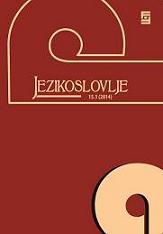Zatvornički sljedovi u sredini hrvatskih i talijanskih riječi – mogući izvor poteškoća govornika talijanskoga jezika u ovladavanju hrvatskim jezikom
Comparison of medial consonant clusters in Croatian and Italian – possible cause of interference in Italian learners of Croatian
Author(s): Ivana Lalli Paćelat, Zrinka JelaskaSubject(s): Language and Literature Studies
Published by: Filozofski fakultet, Sveučilište Josipa Jurja Strossmayera, Osijek
Keywords: Croatian; Italian; consonant clusters; grapheme; phoneme
Summary/Abstract: This paper compares consonant clusters in Croatian and Italian in order to predict some difficulties native Italian speakers could have while learning Croatian. Although both languages have spelling system based on Roman alphabet and similar number of phonemes, Croatian and Italian differ in the distribution and number of possible consonants within each syllable and across the syllable boundaries. For the purposes of this paper the most interesting are the inter-syllabic consonant clusters that belong to two different syllables in the middle position of a single word. In Italian the longest possible medial cluster consists of four consonants, but there are only a few four consonant clusters in Italian. Croatian clusters with four and five consonants are common and frequent, and they appear in many common words of Croatian (or Slavic) origin, not borrowings. In addition to that, Croatian consonant clusters can have up to six consonants, even seven are imaginable. However, only four Croatian consonants in a cluster could be non-syllabic, the clusters that consist of five or more consonants always have one syllabic consonant: vibrant r (in Italian language it is never syllabic). The research on data that makes just a portion of much larger data on consonant clusters reveals that there are 222 among two-member consonant clusters in the Croatian language which are not found in Italian. As interesting as they may be for contrastive linguistics, these differences are very important for applied linguistics, esp. SLA, as they could lead to phonological interference if the necessary attention is not paid in the initial stage of learning Croatian. As Croatian teacher have already confirmed that some predicted negative transfers from Italian in Croatian learners do exist, future research could do it more systematically.
Journal: Jezikoslovlje
- Issue Year: XV/2014
- Issue No: 1
- Page Range: 67-89
- Page Count: 23
- Language: Croatian

